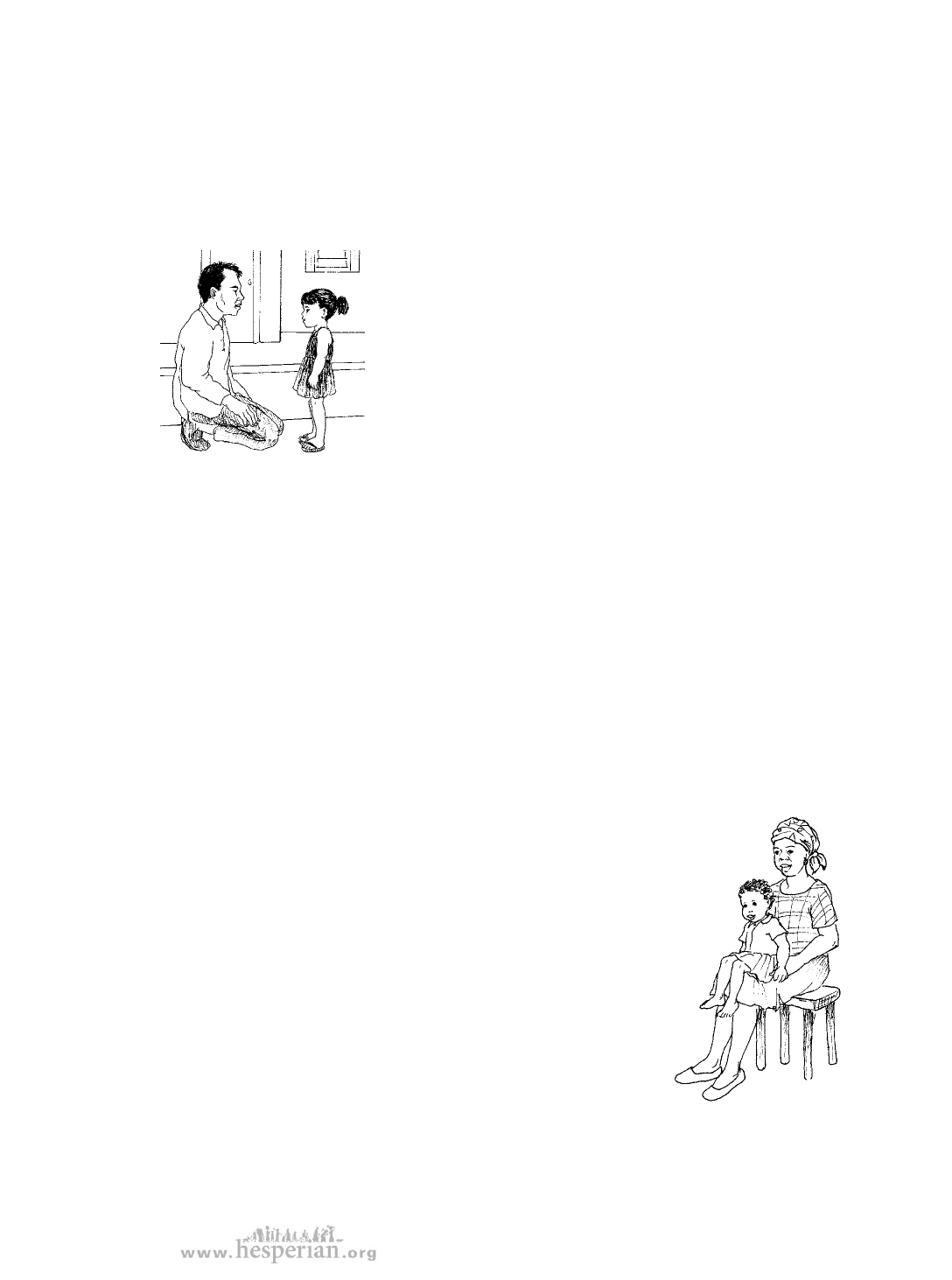
what can your child hear? 51
Checking a child’s hearing at home
It is hard to check a small child’s hearing. But even if you plan to have
your child’s hearing tested by a professional, it is helpful if you can first
check your child’s hearing yourself. Then you can give information to the
professional and you can better understand what the
professional is doing.
Also, checking hearing at home is free and uses
materials that are easy to find. And doing the
checking yourself will give you more confidence to
decide about your child’s care and development. It
is also a good way for friends and family members
to get more involved as your child learns to
communicate.
Keep in mind that your child may respond to:
• what she sees, not to the sound.
• the vibration (shaking) that a loud sound makes.
• the expression on your face, or to your gesture.
And your child may not respond if:
• she is busy doing something.
• she is sick or has an ear infection.
• she is tired, bored, or in a bad mood.
How to check your child’s hearing
Try to notice the sounds your child responds to in everyday
settings. This is a good, general way to learn about your
child’s hearing. Next, you can check to see what kinds of
sounds your child may or may not hear. You can first
check to see what sounds she hears that different objects
make, and then what ‘speech’ sounds she hears when
people talk.
To do this, you need:
• a quiet place without other sounds or noise.
• some simple equipment.
• 2 people to help you.
First try to check the hearing of a child who is the same age as your child
and whose hearing is normal. Practice until you see how a young child
responds to hearing a sound.
Helping Children Who Are Deaf (2004)